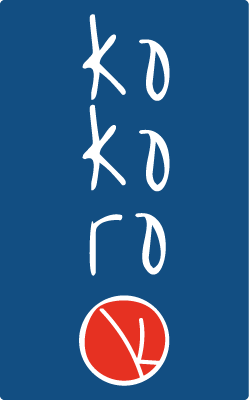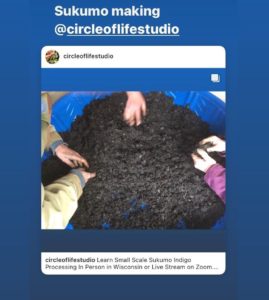
March 2020
WHAT INDIGO VAT CAN I DO?: THE RAPID REDUCTION INDIGO VATS.
In our research and our own studies on indigo dyeing, and seeing that Chemical Vatss did not meet our expectations for a truly ecological and reliable use in fiber dyeing, we focused above all on the use of the so-called QUICK REDUCTION TANKS. They use iron, henna or fructose, along with lime (calcium hydroxide) to reduce indigo and that seemed to us a much more ecological alternative.
In these types of vats, slaked lime (calcium hydroxide) is used to increase the pH and fructose is the reducing material. Honey or a fruit syrup can be used in place of fructose. Cane sugar or refined sugar will not work.
These types of vats do not smell as strong as chemical vats, their ingredients are easy to find, and they operate relatively quickly. Heat speeds up the reaction time but does not require continuous heating.
They seemed like a really affordable and reliable alternative in terms of results.
However, apart from creating sediment that can damage the fibers, the sediment itself can trap the undiminished indigo.
They are vats that need experience to handle and balance and we saw that they are not ideal for long term use.
Although there are often discrepancies, among people who say that they eventually become fermentation vats, this fact is really unproven.
We began to make fast reduction vats of different sizes in order to master the technique and learn to control the vats in terms of their maintenance and fiber dyeing results. At the beginning we made one-liter, five-liter vats… until we made 100-liter vats.
These vats presented an important challenge for us because in the dyed fibers, we found that there were problems of “fading” and that the indigo did not finish penetrating the fiber in a uniform way, leaving areas with uneven dyeing, even in fibers dyed in blue more dark. We have fabrics that have not been exposed to direct light, but that exposure to air itself seemed to cause the indigo to fade.
Our first suspicion focused on the amount of lime in the fructose and henna vats specifically.
We have rewashed dyed fabrics in these vats after several months of being dyed and they still hold large amounts of lime. After washing them for another month they have lost quite a lot of original color.
Based on these results, and based on the experience with fermented indigo vat dyeing that we have carried out with David Santandreu, our conclusions on these vats and on the general indigo dyeing process are:
- The pre-washing of the fibers is a very important element, the use of carbonates (sodium carbonate) is responsible for staining the fabrics and therefore, it is not recommended to use it to clean the fibers before the dyeing process.
- The excessive amount of lime in these vats also makes it difficult to dye really uniform, causing the dye to fade over time and the subsequent washing of the fibers itself to give misleading results in terms of the actual color that remains on the fiber.
However, these 1,2,3 rapid reduction vats using sugar, fruit or plants have introduced many of us to non-chemical reduction processes and made it possible for us to dye with indigo on a regular basis.
They are affordable, easy to make, and can be ready in a few hours, making them ideal for workshops and experiments to teach the basic workings of a vat of indigo. These vats have taught us the principles of reduction and indigo dyeing.
But for truly professional results, offering long-term stability and durability in dyeing, we consider that they are not suitable.
Our interest in continuing to expand our knowledge has led us to learn more about the fermentation of indigo. For us it is a return to the origins of natural textile dyeing. Nowadays, fabrics that maintain their color, almost in perfect condition, have come down to us. We seek to offer that same quality, naturally dyed fabrics that last over time.
Coming soon: Part III: Why did we want to make a fermentation vat?






